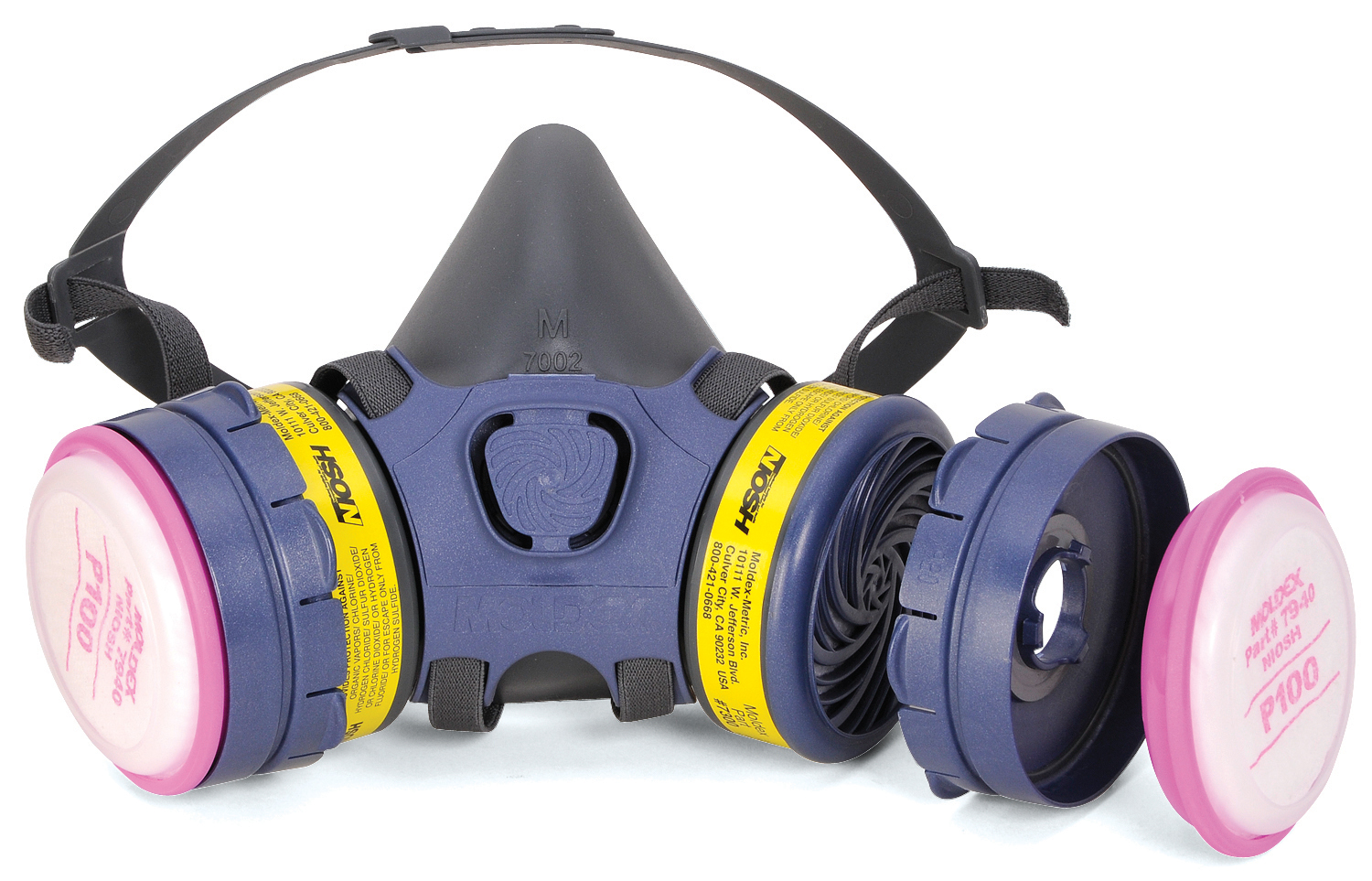
20 Mar Choosing a Respirator
By Gabriel Curry
HUB Industrial offers a wide variety of masks to meet the safety and compliance needs of a vast majority of our customers.
But like a restaurant with a twenty-page menu, the plethora of choices often creates uncertainty about which item would be the best for you.
Part of our job as specialists in your industry is to simplify the complexities of consumable supplies. We invite you to give one of our industry specialists a call, and they can give you a recommendation.
But we recognize that some citizens of HUB nation prefer to be more hands-on; and for them, we have done our best to lay out the basics of our product line below so you can feel confident that you are using the right product for your shop.
Before we begin, we want to be clear about one thing: there are certain respiratory hazards that require specialized equipment not available from HUB. Do not attempt to use any of the passive devices described below in environments that are immediately dangerous to life or health, where the atmospheric oxygen concentration is less than 19.5%, or if the hazardous gases you are dealing with are odorless or tasteless. All NIOSH certified respirators must be fit tested and used under the guidance of a comprehensive respiratory protection program in accordance with OSHA regulations, 29 CFR 1910.134 and other applicable regulations.
Paper or Plastic?
There are two basic styles of devices we offer at HUB: the disposable mask, or the reusable respirator.
The reusable respirator may be the choice for some work environments. They are available as a half mask or a full face mask and are used with replaceable filter elements that can be customized to the hazard. Whether you buy Moldex or 3M, you must outfit your mask with component parts compatible with that mask. 3M parts do not fit Moldex, and vice versa.
The disposable mask can be an effective protective device, especially when the hazards are limited to dry particulates in the air, such as sawdust or gypsum. A few models are equipped to handle nuisance vapors, such as are experienced by welders, and another will stand up to oily mists. Many are equipped with one-way valves, which bring an extra layer of comfort by permitting exhaled air a low-resistance pathway through the valve.
The reusable masks are designed to be easily disassembled for washing after every use. They may be worn comfortably during extended use, and the Moldex half mask is designed to drop down and be worn about the chest when not in use. Disposables, on the other hand, are… disposable! Just as paper plates and plastic utensils offer decided convenience over washing dishes, disposable masks can simplify plant protocol. In the same vein, the cost of the mask goes up as the quality of construction and design improves. Imagine yourself in the grocery store making strategic calculations on the cost/benefit matrix of 300 flimsy paper plates versus expensive Chinet® ware and you will be in the correct frame of mind to choose the best mask for your plant. Striking a balance between cost savings and comfort and effectiveness is the name of the game.
N95? P100?
Respirators are rated according to what they filter. The main division here is whether they filter particulates or gases/vapors. Gas/vapors such as those found in paints and pesticides, formaldehyde, chlorine, etc. require the use of the appropriate filter cartridge in a reusable respirator mask.
Particulate aerosols can be “oil-free,” as in the case of sawdust or fiberglass insulation, or it could have an “oil aerosol” component as you might find in a machine shop. NIOSH-approved respirator masks are labeled with an N, R, or P designation followed by a number. The letter code tells you whether it has been designed to withstand oil aerosols; the number tells you the filter efficiency. The two most common particulate filters are N95 and P100.
N95: A particulate filter that is rated to trap 95% of particulates and should not be used in environments with oil aerosols. “N” class filters should usually be discarded after a day’s use (or less).
P100: 99.97% particulate efficiency, suited for use in the presence of oil aerosols. “P” class filters are rated for repeated use, although some manufacturers may have their own disposal instructions for this use. They may be worn until breathing becomes difficult.
Now here is a trivia question: What do the letters N, R, and P represent? The origins of the designations are not well publicized. The acronyms were developed by NIOSH. As a public service, we are posting them here:
N Not to be used with oil
R Resistant to oils—Can be used for up to eight hours in oil-aerosol environment
P Oil Proof—Best choice for oil-aerosol environment
The majority of applications of disposable masks will be those with a NIOSH rating of N95. These are intended as single-use masks to be discarded after a day’s work.
We sell one disposable mask that is rated at P100. We also sell P100 discs for use in our reusable masks. Additionally, we offer a “piggyback” adapter that will allow a P100 disc to be combined with a gas/vapor cartridge on Moldex reusable respirators for combined particulate and chemical filtration.
Chemical Filtration
Apart from a few disposable models that include a carbon layer for nuisance gas filtration, chemical filtration is the domain of the reusable respirator. HUB sells chemical cartridges for both Moldex and 3M respirators that are labeled for organic vapors as well as acid gas. Additionally, we have a Moldex cartridge that combines all hazards of all its other cartridges —acid gas, organic vapors, ammonia, formaldehyde, etc—into one.
These cartridges consist of material that acts as a sponge to adsorb the target contaminant. If the contaminant exists in concentrations in excess of the cartridge’s ability to remove (or if the cartridge has been used up), the wearer may become conscious of the contaminant by smell or taste and must leave the hazardous environment immediately, but this type of warning property must not be used as the exclusive criteria in determining when a hazardous atmosphere should be left or when a particular respirator should or should not be used. OSHA requires that the user develop a change-out schedule for these types of respirators.
We do also sell an emergency escape respirator which is designed to be clipped to belts of workers in environments where the possibility of chemical spill is present. In the event of an accident, these lightweight respirators may be deployed to allow a worker some measure of safety while escaping from the danger. It is not intended for regular use and should be disposed of after use.
| Respiratory Hazard | Disposable Mask | Reusable Respirator |
| Sawdust, insulation, smoke, carbon dust | N95 | P100 |
| Microscopic dust, asbestos, lead, cadmium, oil aerosol | P100(except asbestos) | P100 |
| Welding , galvanizing | N95 w/ carbon layer | Acid Gas + P100 |
| Painting, dry cleaning, pesticide application | Organic Vapor cartridge or Multi Gas cartridge |
Figure 1. Common hazards and their prescribed respirator
A health and safety professional should always be consulted to determine the appropriate use of a respirator in any contaminated environment.
All NIOSH certified respirators must be fit tested and used under the guidance of a comprehensive respiratory protection program in accordance with OSHA regulations, 29 CFR 1910.134 and other applicable regulations.
Thanks to Moldex for their help preparing this article and for the use of these images. For a video rundown of disposable respirators, see MMM.HUBindustrialsupply.com/disposable-doesnt-mean-cheap/
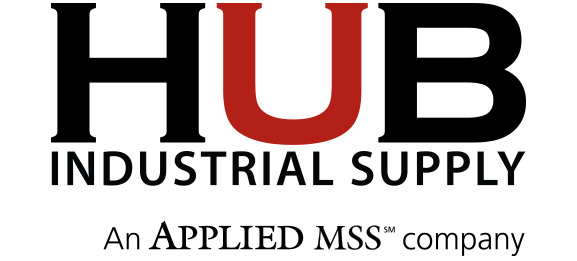


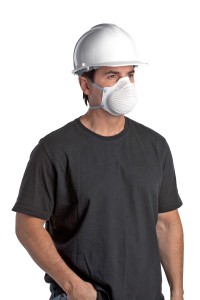

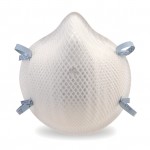
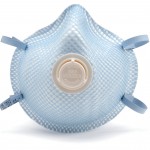

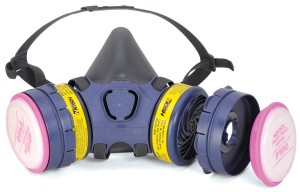
No Comments